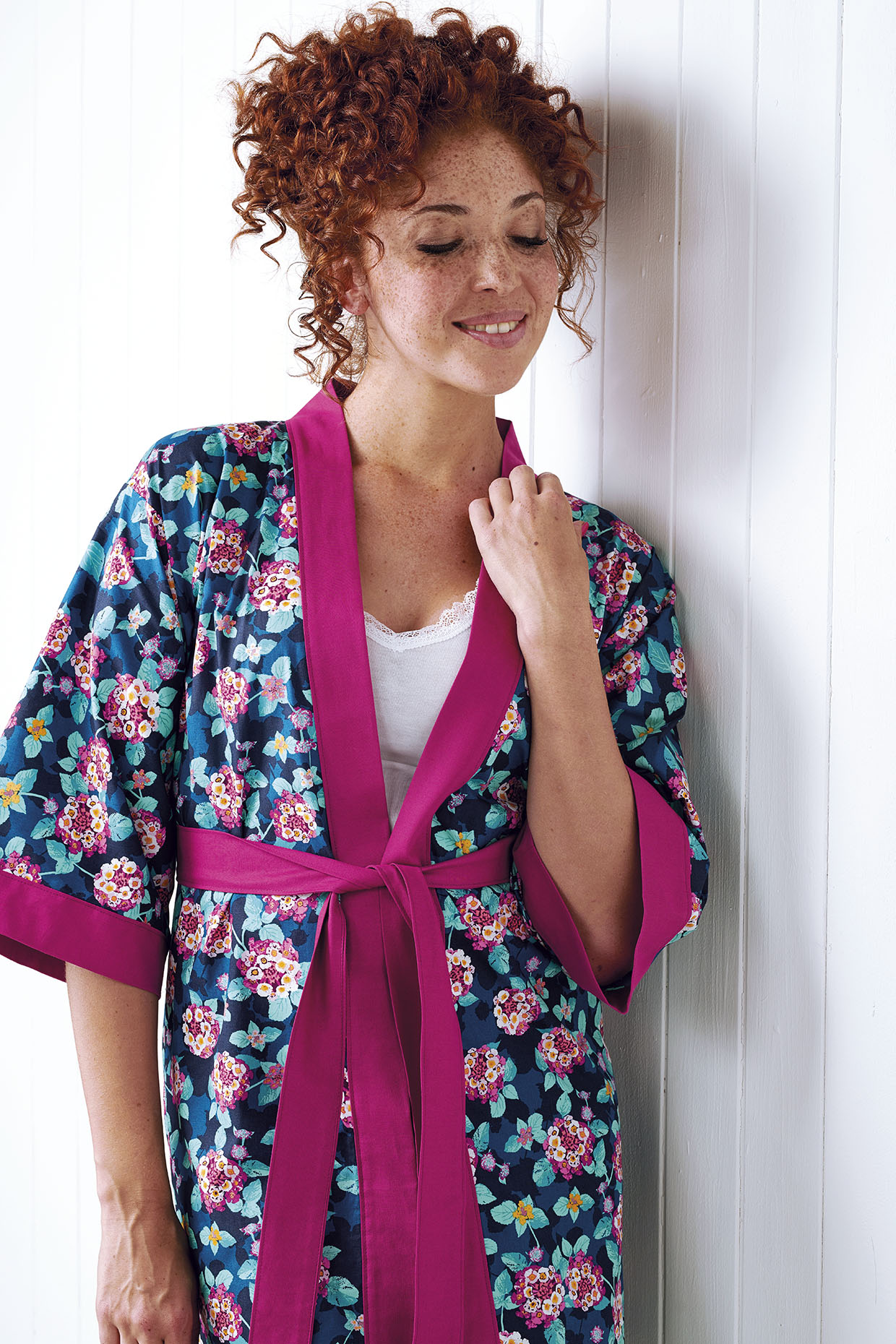Cutting out
Step 1
From the main fabric cut:
- Back robe piece: cut one 97x52cm (381⁄8x20½in).
- Front robe pieces: cut two 97x26cm (381⁄8x10¼in).
- Sleeves: cut two 52x35cm (20½x13¾in).
Step 2
From the contrast fabric cut:
- Waist tie: cut two 12x12cm (4¾x4¾in).
- Contrast trim: cut two 12x112cm (4¾x44in).
- Cuffs: cut two 12x52cm (4¾x20½in).
Preparing the robe front and back
Step 1
Measure around your neck to find your quarter neck measurement. Ours is 38cm (15in), and a quarter is 9.5cm (3¾in).
Step 2
Fold the back robe piece in half right sides (RS) together along the width. Mark 4cm (15⁄8in) down from the top edge on the fold. Then mark your quarter neck measurement along the top raw edge. Draw a smooth curve for the back of the neck and cut away.
Step 3
For both of the front robe pieces, measure along the top short edge and make a mark at the point of your quarter neck measurement. If your fabric has a directional print, make sure the marked points mirror each other.
Step 4
Mark 45cm (17¾in) down from the top edge, along the long inner edge, and using a long ruler connect this mark to the mark along the top short edge at your quarter neck measurement. Repeat for the other front robe piece to the 45cm (17¾in) point, remembering to treat the second piece as a mirror-image of the first so the cut line will be on the opposite side.
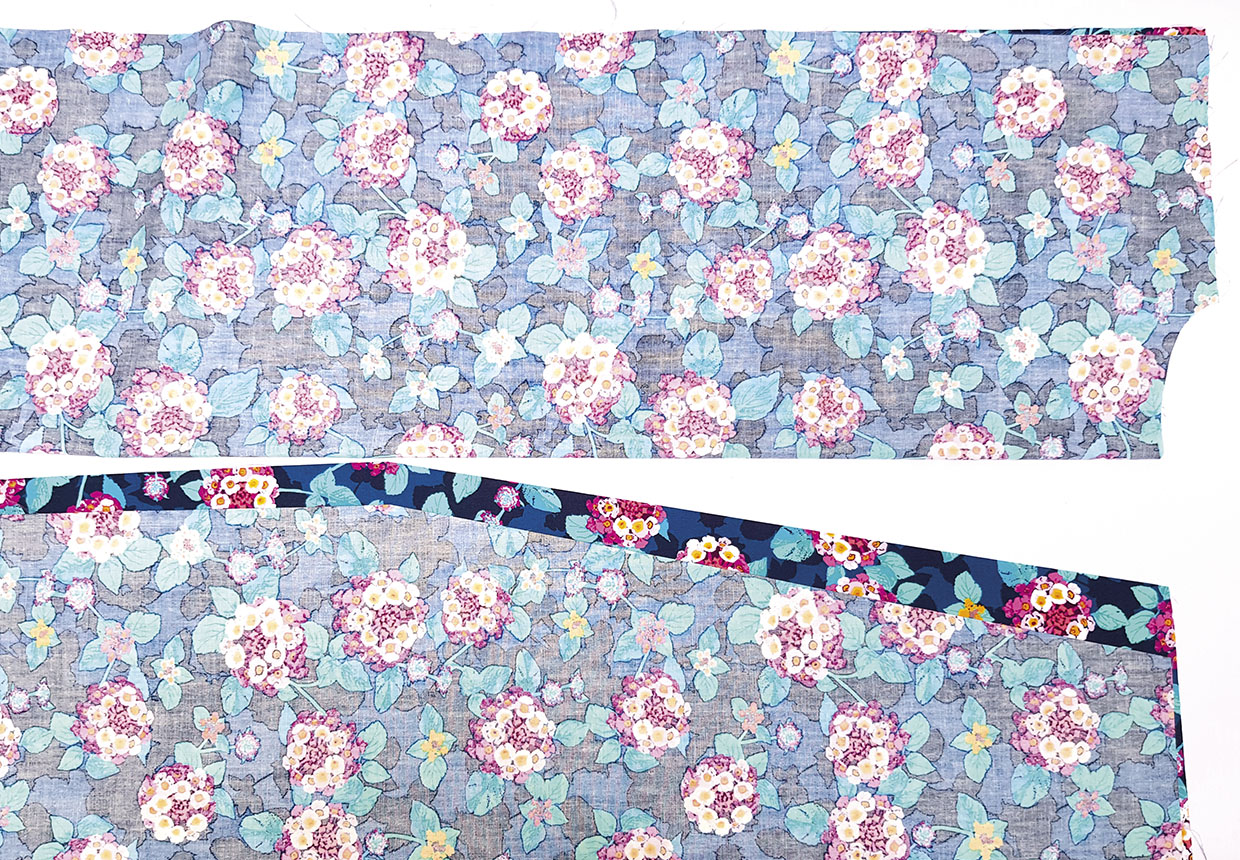
Step 5
Pin front robe pieces to back robe piece RS facing, lining up the long edges and 9.5cm (3¾in) neck points. Sew together along shoulder and side seams. Finish raw edges, press open.
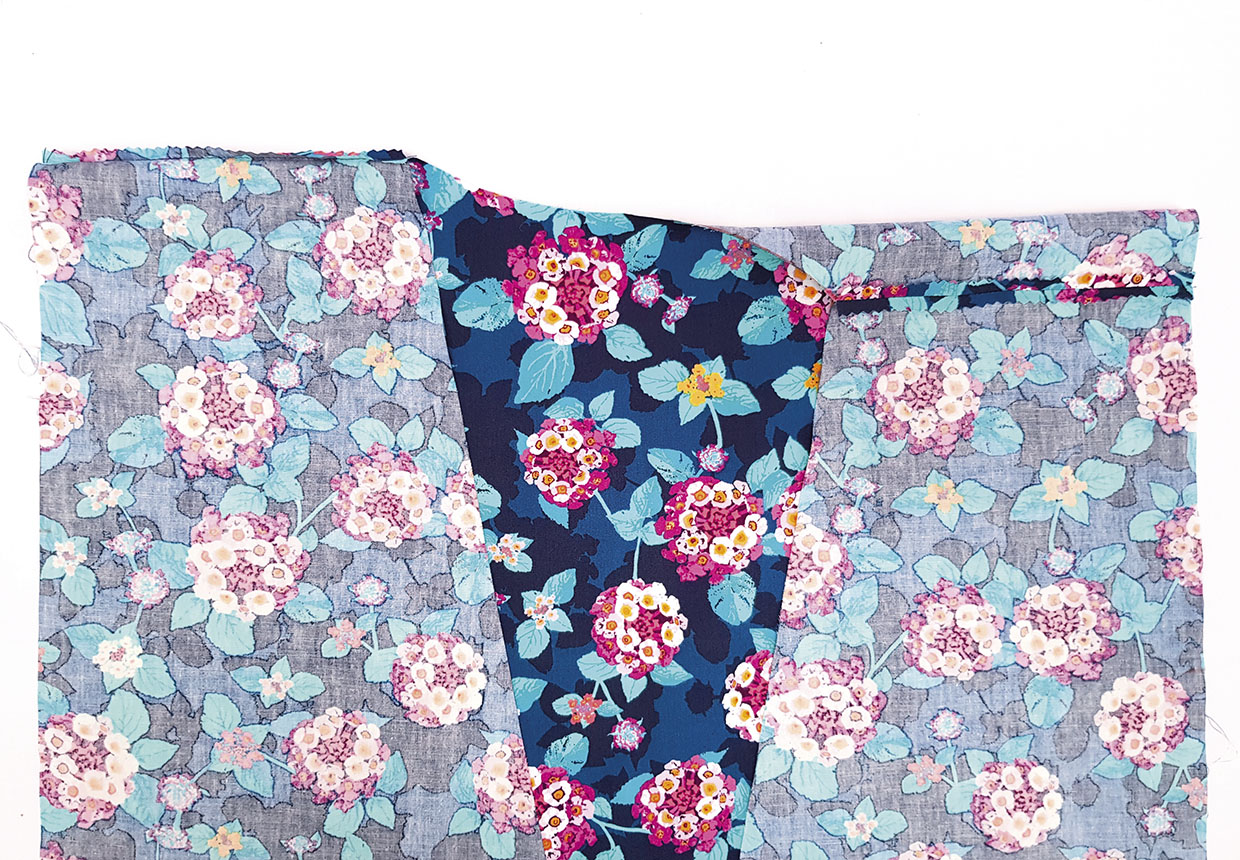
Preparing the sleeves
Step 1
Fold the contrast cuff fabric in half widthways wrong sides (WS) together and press.
Step 2
Open out the fold and sew the cuff strip to one of the main fabric sleeve pieces along one long edge with RS facing. Trim and then press the seam towards the contrast fabric.
Step 3
Along the unsewn long edge of the cuff, fold the raw edge to the WS by 1cm (3⁄8in) and then press.
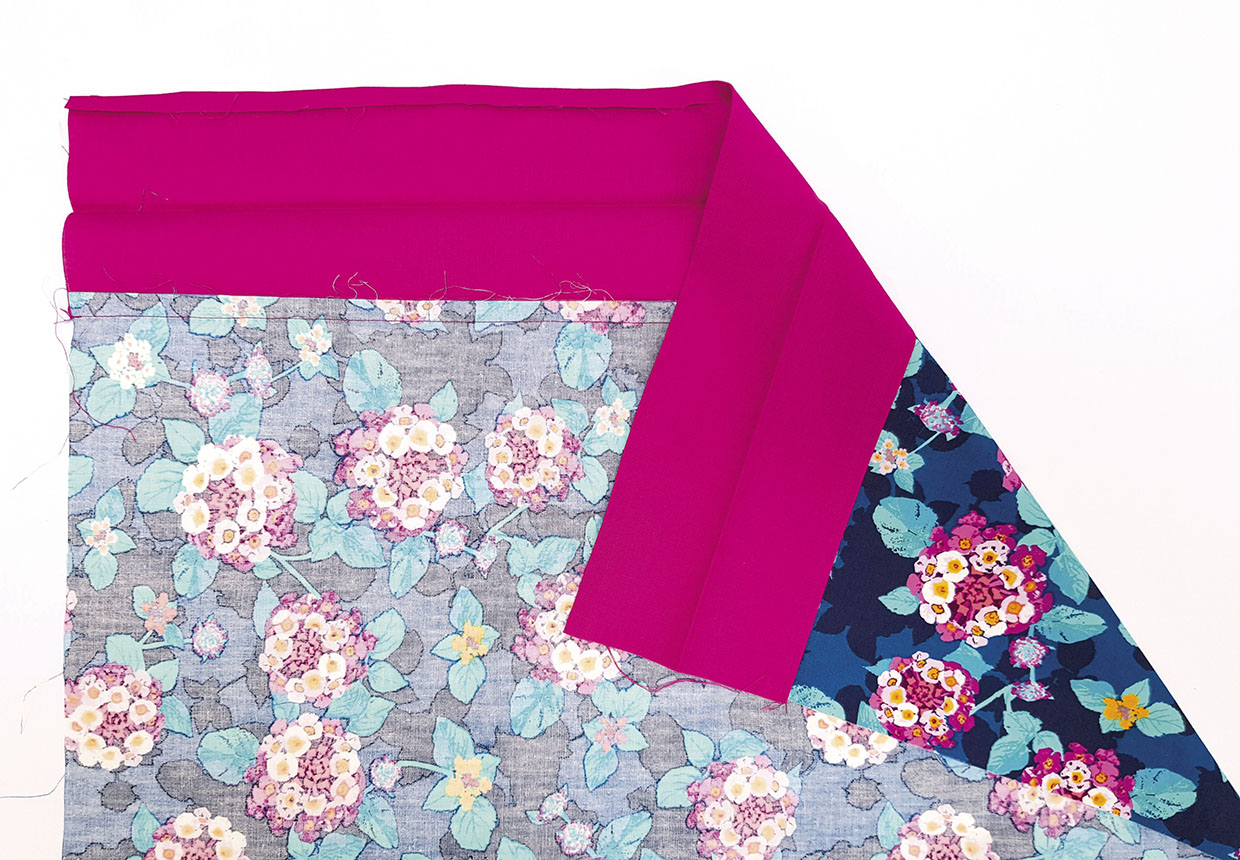
Step 4
Pin the sleeve to the robe front and back pieces with RS together, matching the shoulder seam with the central marked point on the sleeve and aligning the long raw edges. Sew the sleeve into place.

Step 5
Repeat for the second sleeve. If your fabric print is directional make sure you sew the contrast fabric trim to the opposite end of the first sleeve so that the pattern runs in the same direction. Press the sleeve seams flat.
Assembling the robe
Step 1
Lay the robe out flat with the front and back RS together and the sleeves folded in half, aligning all raw edges. Pin in place and then sew from the sleeve cuff along the sleeve towards the underarm. Pivot at the seam where the sleeve joins the robe and sew down to the bottom of the robe. Repeat on the other side of the robe.
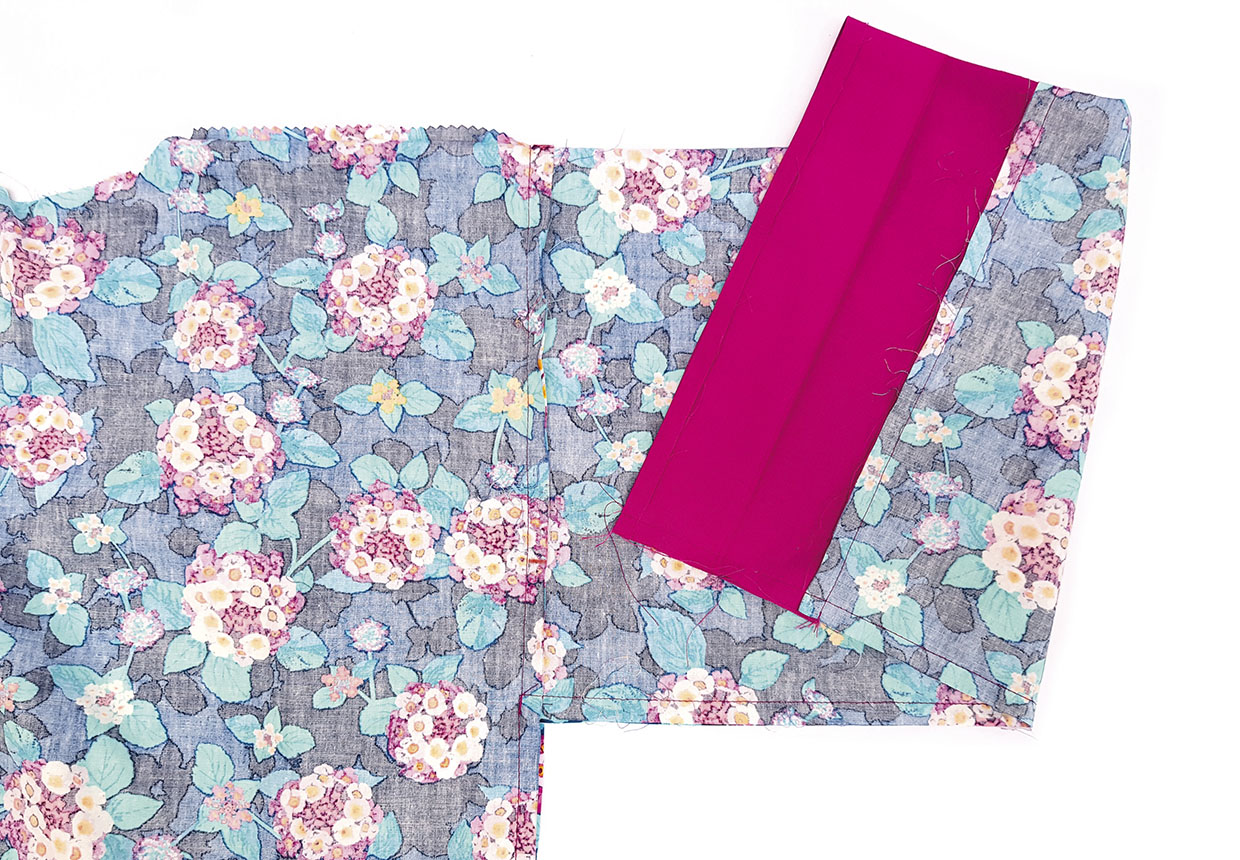
Step 2
Finish the side seam with an overlocker, pinking shears or a zigzag stitch and press open.
Step 3
Turn the robe RS out. Refold the contrast trim for both sleeves WS together to encase the raw edges. Pin the cuff in place, then topstitch to close.
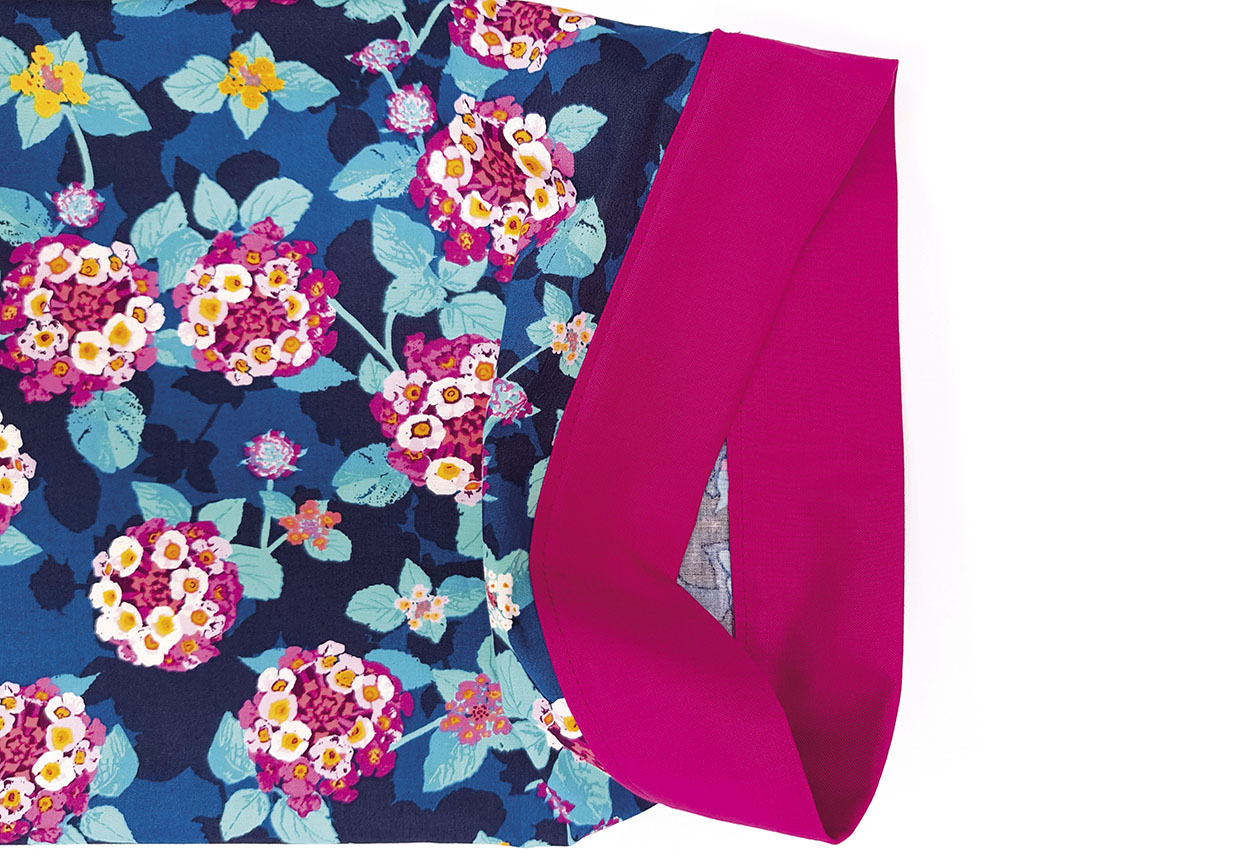
Adding the contrast trim
Step 1
Sew the two contrast trim pieces together along two of the short edges. Press the seam open.
Step 2
With RS together, align the centre seam of the contrast band with the centre of the back robe neckline. Pin in place along both sides of the robe aligning the long raw edges.
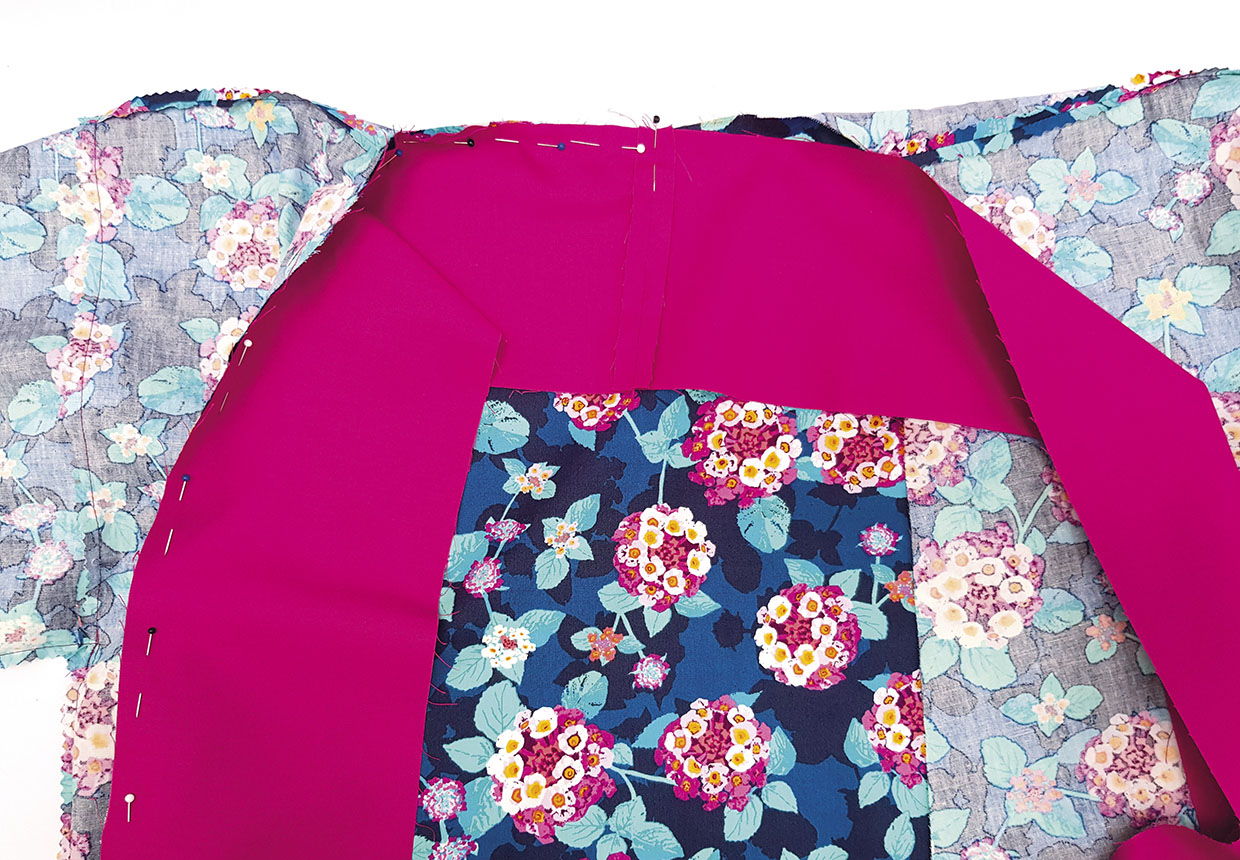
Step 3
Stitch the trim in place and press the seam towards the unsewn edge of the trim.
Step 4
Fold the outer unsewn edge of the trim over to the WS by 1cm (3⁄8in) and press.
Step 5
Fold this edge over to enclose the exposed seam and topstitch in place.
Finishing off
Step 1
Fold the bottom edge of the robe to the WS by 2.5cm (1in) and press.
Step 2
Fold the pressed raw edge of the fabric over again to meet the raw bottom edge. This will create a hem 1.25cm (½in) wide. Press to secure and then stitch in place.
Step 3
Sew the waist tie pieces together at the short ends, then press the seam open and cut the tie to 200cm (79in) long.
Step 4
Fold the long edges RS together and press. Pin then sew along one short edge and along the 200cm (79in) length.

Step 5
Clip edges then turn RS out. Tuck the raw edges in and press. Topstitch all the way around to finish the robe tie.








